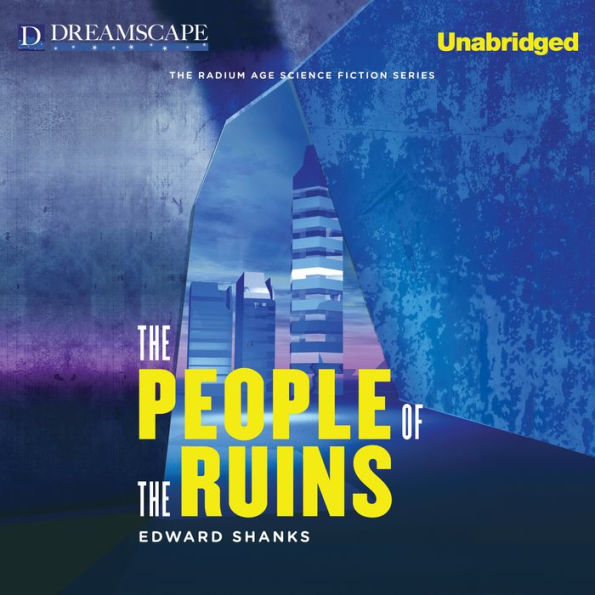In 1920, in the aftermath of his time in the British Army during World War I, Edward Shanks published his novel The People of the Ruins. This new edition, complete with an introduction by Paul Marsh-Russell, introduces new readers to Shanks’s tale of a present-day man who finds himself 150 years in the future where technology and society have regressed.”
—Reactor Magazine
“A penetrating tale of near-future disillusion that gazes upon a future made by World War I. Shanks, in 1920, is us, now.”
—John Clute, author of The Darkening Garden (2006) and Sticking to the End (2022)
“The time could not be riper for Mr. Shanks’ novel of the English Revolution—and after.”
—Athenaeum (1920)
“An imaginative story of the future, keenly reasoned, exceptionally well told, and true to the great tradition. . . . At once a fine narrative novel and an inexorably logical picture of the bitter future being prepared by the advocates of class consciousness.”
—The Living Age (1920)
“Predicts a cataclysm in our social system—to take place in 1922—and, instead of depicting an England under reconstruction, with a highly developed system of scientific and mechanical invention, it shows us an England of 2000, which is living on the remnants of the undeveloped system of the previous century.”
—The Bookman (1921)
“A fine, full-blooded story . . . quaint and inviting.”
—Times Literary Supplement (1920)
“This novel has the abandon of a Jules Verne romance, the terror and excitement of a Nick Carter tale, and the ultimate literary claims of a Münchausen invention.”
—The Dial (1921)
“A powerfully imagined description of England, as it will be when Communism has attained its full triumph.”
—British Weekly (1921)
“It is a book that sticks oddly in the memory, and ends by giving a good deal of decidedly uncomfortable food for thought.”
—The Spectator (1920)
“The theme is fascinating, and Mr. Shanks has succumbed to its spell in pessimistic mood.”
—The English Review (1921)
“The first of the many British postwar novels that foresee Britain returned to barbarism by the ravages of war.”
—Anatomy of Wonder, Neil Barron, ed.
“One of the most widely read scientific romances of the post-war years.”
—Brian Stableford, Scientific Romance in Britain 1890–1950
Trapped in a London laboratory during a worker uprising in 1924, ex-artillery officer and physics instructor Jeremy Tuft awakens 150 years later - in a neo-medieval society whose inhabitants have forgotten how to build or operate machinery. Not only have his fellow Londoners forgotten most of what humankind used to know, before civilization collapsed, but they don't particularly care to re-learn any of it. Though he is at first disconcerted by the failure of his own era's smug doctrine of Progress, Tuft eventually decides that post-civilized life is simpler, more peaceful. That is, until northern English and Welsh tribes threaten London - at which point he sets about reinventing weapons of mass destruction.
1006848985
The People of the Ruins
Trapped in a London laboratory during a worker uprising in 1924, ex-artillery officer and physics instructor Jeremy Tuft awakens 150 years later - in a neo-medieval society whose inhabitants have forgotten how to build or operate machinery. Not only have his fellow Londoners forgotten most of what humankind used to know, before civilization collapsed, but they don't particularly care to re-learn any of it. Though he is at first disconcerted by the failure of his own era's smug doctrine of Progress, Tuft eventually decides that post-civilized life is simpler, more peaceful. That is, until northern English and Welsh tribes threaten London - at which point he sets about reinventing weapons of mass destruction.
7.99
In Stock
5
1
7.99
In Stock

Editorial Reviews
Product Details
| BN ID: | 2940175488907 |
|---|---|
| Publisher: | Dreamscape Media |
| Publication date: | 12/10/2013 |
| Edition description: | Unabridged |
Videos

From the B&N Reads Blog

